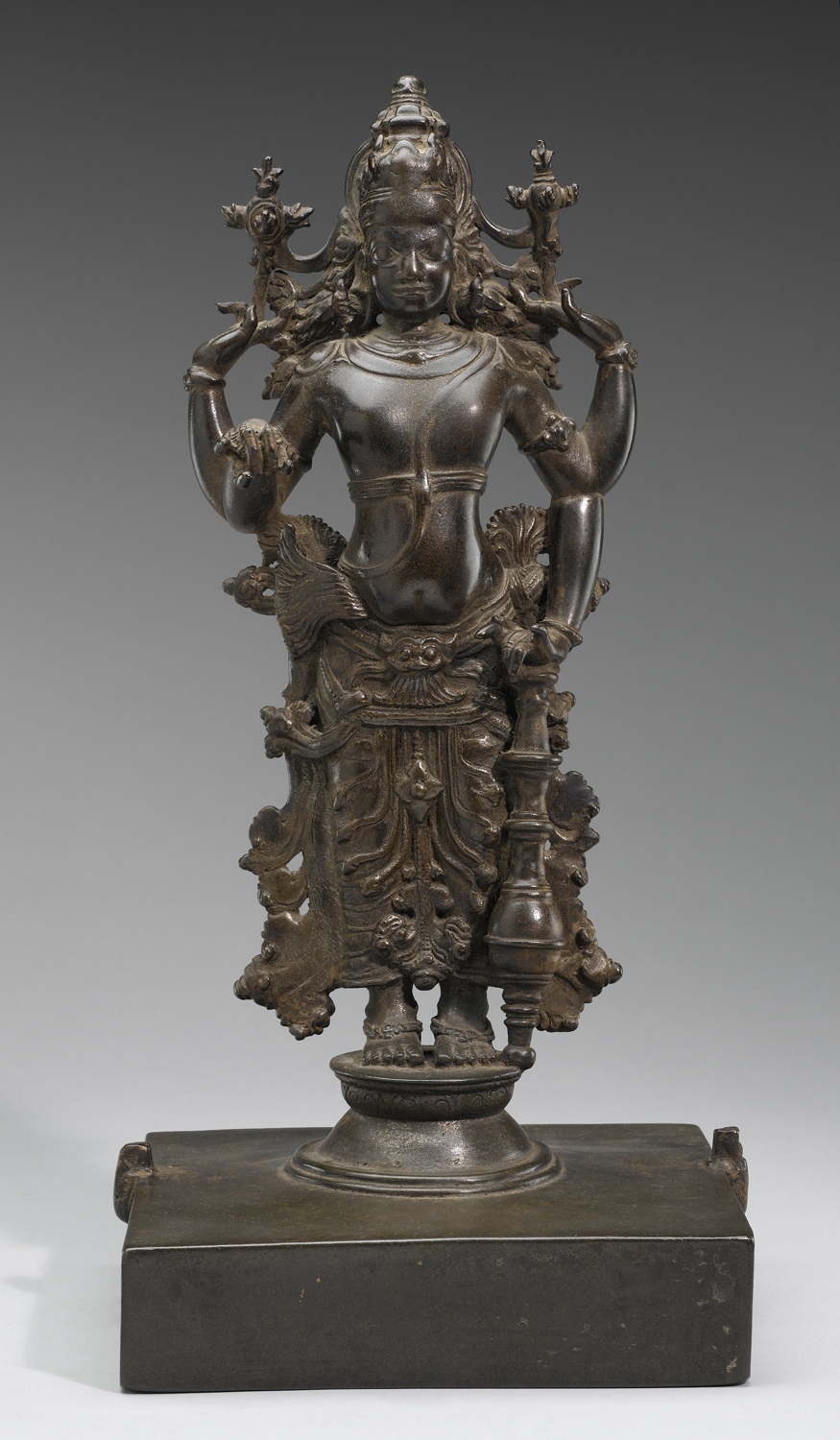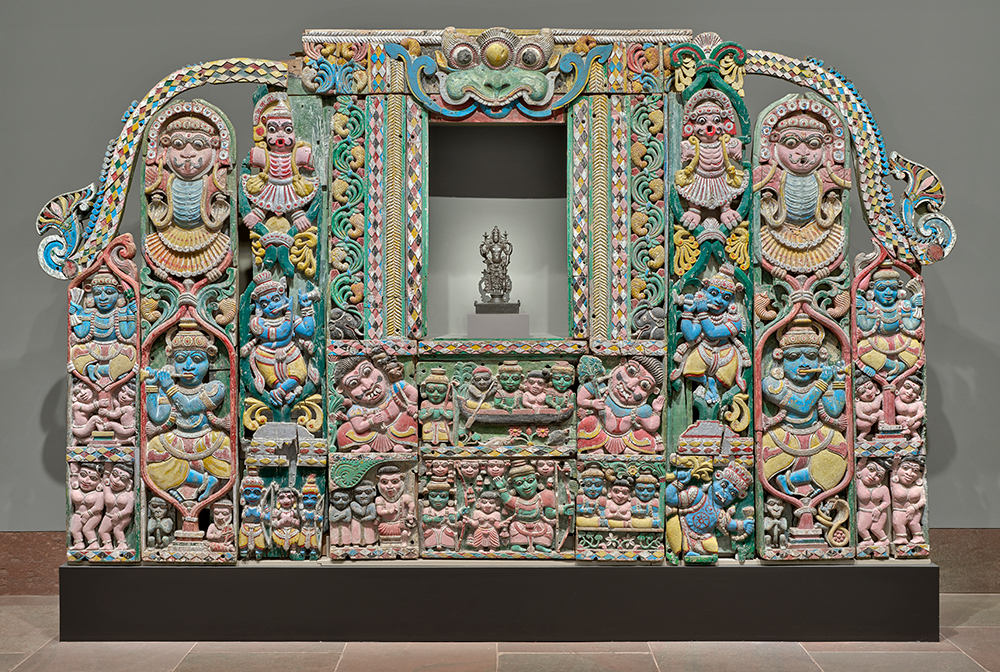Vishnu
c. 1550
Asia: India, Kerala
Bronze
The Norton Simon Foundation
This bronze sculpture of Vishnu, the preserver of the universe, stands on a flared circular base with a lotus-petal design. A tall crown supports the god’s halo, while his hair flows from either side of his head. Vishnu holds a wheel in his upper-right hand and a conch shell in his upper left. His lower-left hand rests on an inverted club, and his lower-right hand holds a fruit. His elaborately designed skirt is secured by an ornamented belt featuring a makara (mythical beast) clasp. Pleats around the waist create fanlike designs, with tassels cascading from the center. These rich decorative details reflect Kerala’s artistic traditions, emphasizing form, intricate ornamentation and rhythmic patterns.
Originally, this sculpture may have been displayed in a temple dedicated to Vishnu, or in a domestic shrine. That display context is re-created here, with the sculpture installed in the niche of a temple wall from Kerala decorated with images of his various avatars.
A New Context for Familiar Objects
How does the curatorial staff make decisions about pairing one object with another in our galleries? The sculpture of Vishnu recently installed within the window niche of the vibrant wall-sized Paneling for a Temple or Chariot (Ratha) juxtaposes two works of art from Kerala, South India in order to highlight their complementary stylistic qualities. The intricate garments of Vishnu’s various avatars and the ferocious mythical figures on the wall panel draw attention to the ornate detailing and dynamic, flared designs of the costume within the bronze sculpture. The figures on the panels and the bronze deity share notable features, such as robust limbs, full, rounded faces and striking eyes that directly engage the viewer. Assistant Curator Lakshika Senarath Gamage offers an overview of this pairing in the 2025 publication Recollections: Stories from the Norton Simon Museum.

